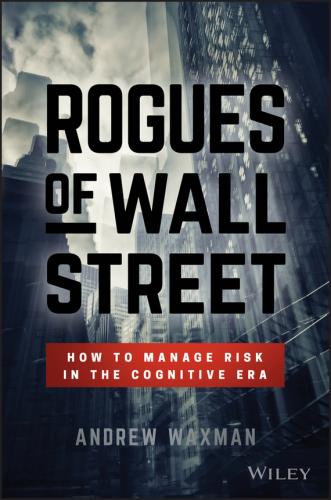Can the Rogue Trader Be Stopped?
It is likely impossible to completely stop Rogue Traders. What firms should aim for is minimizing the period of time such activity can go undetected and minimizing the extent of the losses.
First, incentive structures for traders should be reexamined. The practice of banks rewarding employees for risky trading activity should be eliminated. Instead, firms need to continue to reshape their culture to reflect the change in business strategy in the post–Dodd‐Frank world,24 which includes changing incentive structures. This includes, for example, deploying clawbacks25 on traders “swinging the bat” or making profits for trades in breach of agreed limits or outside the scope of their mandate. Additionally, incentive structures for traders whose job is to facilitate client trades rather than trade on the bank's own account, increasingly the norm in investment banks, should reflect their client relationship management objectives more clearly. Such incentive structures should reflect effective risk management and reward good citizenship. For example, traders identifying opportunities to improve the control environment or alerting management to risky behaviors on the floor, as well as delivering excellent client relationship management results, can be incentivized.
Second, trading systems and controls should be redesigned to reflect this change in culture and objectives. Investment bank systems have traditionally put traders at their logical center, maximizing features such as flexibility to allow traders to enter new clients and trades while bypassing certain controls. System design priorities in a Dodd‐Frank world need to reflect the twin priorities of clients and risk management. Putting clients and risk at the system's core enables management to organically track client limits and conflicts across the bank's business portfolio. Better understanding client needs and profitability across the platform – M&A advisory, lending, underwriting, asset and wealth management, sales, and trading – should also follow, and this will help to grow the business as well as manage risk more effectively.
Third, banks should review their fraud detection methods and procedures. Big data can be the solution as well as the problem. It is clear from publicly available reports that Rogue Traders have been able to conceal their activities for several years at banks with, on the face of it at least, fairly well‐established operational risk functions and controls. It would seem, then, that more aggressive or more precise methods are called for. Retail banks and insurance companies have typically established dedicated fraud units and antifraud software to fight insurance fraud, cybercrime, and other types of fraud. Such methods are worth exploring in the investment‐banking world. Harnessing technology is, of course, already a big part of anti–rogue trading programs in investment banks in the form of trade surveillance, automated trade reconciliation, cancel and correct monitoring, and so on. Given the vast amount of data, however, in these different areas it is not clear how effective such tools can be on a one‐off basis in identifying suspicious activities. Algorithmic data mining and big data analysis could potentially be very useful in helping banks to connect the dots. Take, for example, a trader with several personal trading policy violations. Perhaps, on their own, these might not be sufficient to warrant any special investigation. But were this same trader also identified as someone who had moved from operations to the front office, had not taken mandatory leave,26 and had also accumulated unusual levels of trading profit on a client facilitation desk, such a combination might easily make the trader a candidate for a deep‐dive investigation. In the large and complex world of the modern investment bank, such triggers can probably only be pulled with applications based on investment in intelligent and natural learning. Figure 2-1 highlights some of these indicators.
Конец ознакомительного фрагмента.
Текст предоставлен ООО «ЛитРес».
Прочитайте эту книгу целиком, купив полную легальную версию на ЛитРес.
Безопасно оплатить книгу можно банковской картой Visa, MasterCard, Maestro, со счета мобильного телефона, с платежного терминала, в салоне МТС или Связной, через PayPal, WebMoney, Яндекс.Деньги, QIWI Кошелек, бонусными картами или другим удобным Вам способом.
